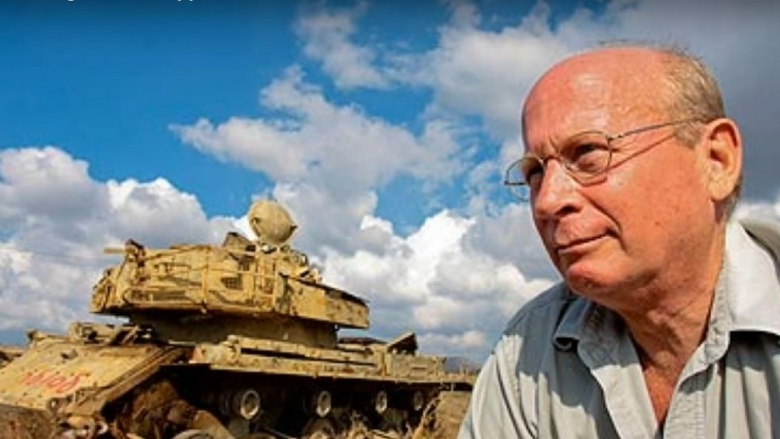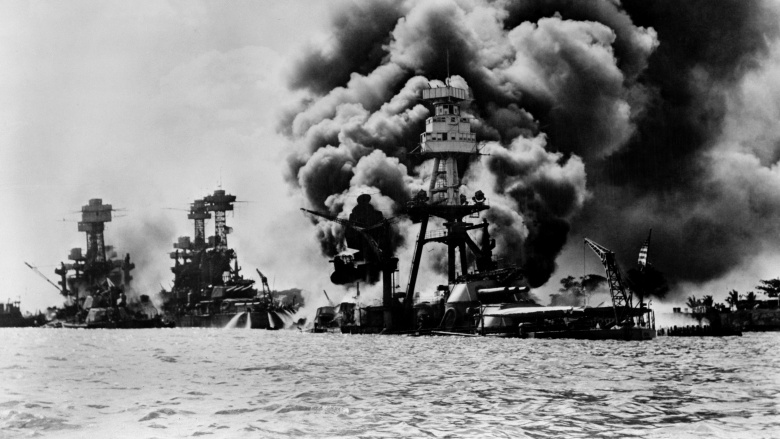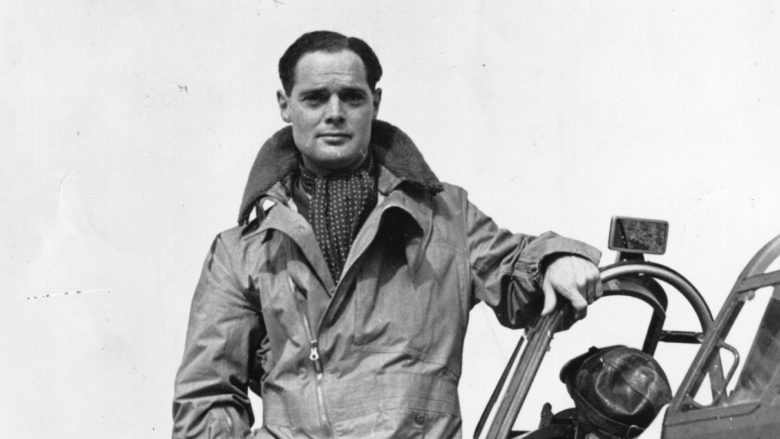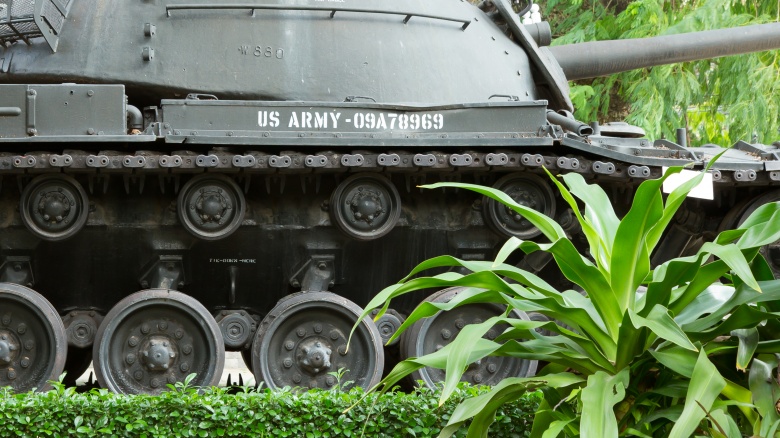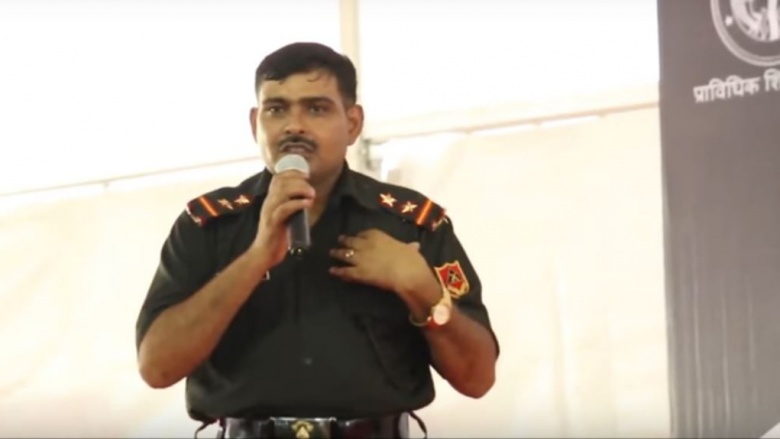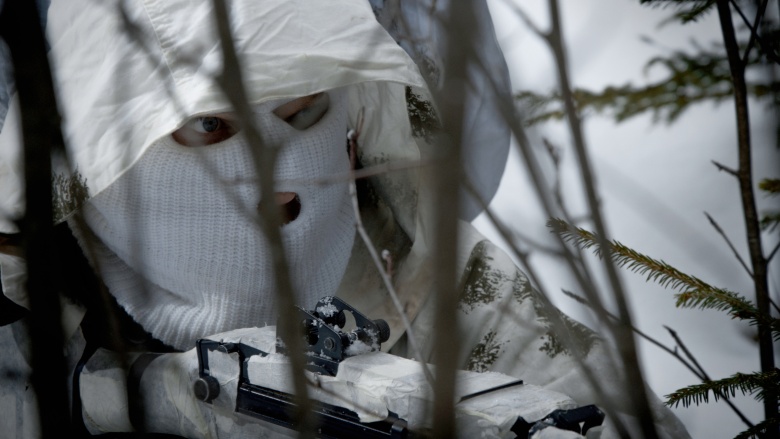Badass Soldiers Your History Books Forgot To Mention
We all love stories about badass soldiers. Half of the action movies ever made follow badass soldiers, but most history books gloss over the stories of real soldiers who put our movie heroes to shame. Here are some that we think deserve recognition.
Zvika Greengold
Israeli tanker Zvika Greengold was enjoying a nice Yom Kippur holiday in 1973 when the Egyptians and Syrians ruined it by attacking his country. Dropping everything and hitching a ride to a nearby military base, he went to war. When he got to the base, Greengold found two old, damaged Centurion tanks. Deciding the old beaters were good enough, he got permission to drive them to the front lines at the Golan Heights. The "Zvika Force" was born.
At the front, Greengold charged into battle like Moses parting the Red Sea. During their first engagement with the enemy his companion tank had to turn back, leaving him all alone against a massive Syrian force. Throughout the night, Greengold fought against the whole column. By changing his position after each shot, he confused the Syrian tanks and took them out one by one like a killer in a slasher movie. When the Syrians turned on their spotlights to try to find the mysterious attacker, they gave away their positions and basically gave Greengold free kills.
Not finished yet, he joined two advancing Israeli platoons to fight more Syrian armor. During this next battle his tank got hit, killing his driver and forcing him to ditch the tank. Shrugging off terrible burns like they were minor sunburns, Greengold took command of another IDF tank to finish the battle. The next day, the small group got attacked by 80 Syrian tanks. The battle went on for so long that his gunner passed out from exhaustion, forcing Greengold to act as both the tank commander and gunner. When the fighting stopped, he went back behind friendly lines, having stopped the Syrian tank advance into Israel. Presumably he went back home and enjoyed the meal that he left.
Edwin J. Hill
Pearl Harbor was a disaster for the United States Navy. The Japanese were able to destroy a large part of the surface fleet, including some of the best battleships of the U.S. force. It would have been even worse if not for Edwin J. Hill, a brave naval officer that is missing from history textbooks. That's not right.
When the Japanese bombers started their attack, Hill realized that his ship, the USS Nevada, had to get out of the harbor to survive. There was only one problem: she was still moored to the dock. With bombs exploding around him, Hill dove off the ship and swam across the harbor. Planes strafed him, but he managed to get to the harbor, throw off the moorings, and swim back to the Nevada while the battleship was pulling away. That's right, he chased down a battleship while swimming.
Japanese bomber pilots continued their attack as the Nevada attempted to escape. Hill stayed topside, battling the Japanese planes. Tragically, a Japanese bomb hit the deck right where Hill was working, killing him (and 46 other men) instantly. Still, the Nevada escaped the harbor and went to fight the rest of the battle, although she ultimately sank from massive amounts of damage and was later salvaged and put back into action. Hill received a Medal of Honor and got a destroyer escort named after him. Why nobody has made a movie about him, we have no idea.
"Mad Jack" Churchill
World War II was a war exemplified by its brutality and the larger-than-life figures that fought in it. One of the most unfairly forgotten was "Mad Jack" Churchill. He fought for the British, and made a name for himself with his odd choice of weapons. Churchill insisted on going into battle armed with a bow and arrow, bagpipes, and a broad sword.
The insane badassery that Churchill brought the front is unbelievable. In 1940, he shot a German officer with his bow and arrow, scoring the last confirmed bow kill in war and probably leaving the poor German with confused last thoughts. A year after the arrow incident, Churchill led an attack on a German position while playing his bagpipes and throwing grenades at the same time. During another raid he captured 42 German soldiers at swordpoint.
Pinned down by German artillery fire in 1944, Churchill found himself the lone survivor of his unit. (Perhaps the bagpipes made him immune to explosions.) He promptly got out those bagpipes and started playing "Will Ye No Come Back Again?" The Germans captured him and sent him to Sachsenhausen concentration camp, but he escaped and survived on "liberated vegetables" until he came across an American division. After the war he headed to Palestine to protect medical convoys, eventually returning to England and settling down to a shockingly normal life, presumably still filled with bagpipe music.
Douglas Bader
In 1931, young Royal Air Force pilot Douglas Bader was doing practice maneuvers in his fighter plane when he crashed. Bader survived, but his legs did not. With both his legs amputated, everyone thought that Bader's flying days were over. There were no slots in the RAF for a disabled pilot.
With the outbreak of World War II, things changed. The RAF needed experienced pilots so badly they started bending the rules, so they put him back in the cockpit. When he got into battle, he flew and fought better than most pilots with legs. He ended up being one of the RAF's leading pilots, with 23 kills to his name.
During one particularly pitched dogfight, Bader collided mid-air with a German fighter. As his plane spiraled to the ground, he jumped out of his cockpit, but one of his legs caught on the airplane and got torn off. Now with only one prosthetic leg, he got captured by the Germans, but they were so impressed with him that they allowed the RAF to airdrop a new leg over his POW camp. That piece of kindness did not change his resolve. For the rest of the war, he continuously tried to escape his camp. It became so frustrating for the Germans that they sent him to a full-on medieval castle to prevent his escape attempts. When the war ended Bader went home, becoming a major figure in the disabled community. Eventually honored with a knighthood, he died in 1982.
Dwight Johnson
While there were many American tank crews serving in the Vietnam War, none were as insanely brave as Detroit-born Dwight Johnson.
Right before the Tet Offensive, Johnson's unit received word that an American infantry unit pinned down in the middle of the jungle needed support. Johnson's crew started barreling through the difficult jungle terrain, probably to a soundtrack of Buffalo Springfield. As soon as the North Vietnamese attackers started shooting, Johnson's M48A3 tank threw a tread. With the tank immobilized, Johnson knew that he could not do anything useful there, so he jumped out to fight the enemy with only a .45-caliber pistol. He quickly ran out of ammo, ran back to his tank, and found a submachine gun. But there were so many enemy soldiers that he ran out of ammo again and had to resort to just beating people with the gun itself.
Realizing that he needed more weapons, Johnson ran to another tank in his unit. The gunner of this tank was severely injured. Dragging him to a nearby medical personnel carrier, Johnson saved the man's life before returning to fire the main gun until it jammed. With the main gun knocked out, he climbed on top of the tank and began spraying enemy forces with the .50-caliber machine gun, all the while completely exposed to enemy fire. Eventually, the Vietnamese forces retreated, and Johnson became the war's only tank man to receive a Medal of Honor. Don't mess with Detroit.
Hans-Ulrich Rudel
One of the most insane jobs in World War II was being a German Ju-87 Stuka anti-tank dive-bomber pilot. Pilots had to fly these slow, poorly defended airplanes over enemy territory looking for targets. As soon as they saw one, they would dive out of the sky, drop a bomb, and pull up at the last possible second. Few pilots ever got good at it, and even fewer survived. Out of all the pilots, none were as badass as Hans-Ulrich Rudel.
Rudel flew the whole war, an amazing survival feat for a Ju-87 pilot. He served mostly on the Eastern Front, knocking out tanks with crazy precision bombing runs. His flight commander commented: "He is the best man in my squadron! But this crazy fellow will have a short life." Rudel proved him wrong, and over the course of the war he knocked out 519 tanks.
But his craziest moment came when attacking the Soviet dreadnought Marat. After scrapping with the ship and damaging her once, Rudel found her in Leningrad harbor undergoing repairs. Not about to leave that job unfinished, he ended her career with a shockingly well-placed bomb dropped while they were in the middle of such a high-speed dive he was on the verge of blacking out. He hit the ammunition magazine, and the entire ship was sent to Davy Jones' locker. He survived the war and was interrogated by the Allies before heading to Argentina.
Yogendra Singh Yadav
In 1999, India and Pakistan went to war over a series of border disputes. Called the Kargil War, the conflict was mostly fought in the mountains of Pakistan and India, which provided a bunch difficulties. Soldiers had to climb ice-covered mountains and scale cliffs, all while being shot at by enemy combatants. In this environment, Yogendra Singh Yadav became one of India's national heroes.
Yadav and his platoon attacked Tiger Hill, a massive mountain with three bunkers at the top. The only way to get there was to scale a cliff face. Yadav volunteered to go first with a few men, fixing ropes and anchors into the cliff for others who would follow. But, the enemy knew they were coming. They opened fire, killing everyone but Yadav. He was shot three times in the groin and shoulder, but he wasn't going to let measly bullets scare him. He kept climbing.
He finished the climb and found himself facing three bunkers. Already bleeding out from his wounds, Yadav crawled to the first bunker and threw a grenade inside. The explosion killed everyone inside, allowing more of his fellow soldiers to scale the face. When reinforcements arrived he opted to lead the assault on the remaining bunkers, getting into gnarly hand-to-hand combat and spearheading the capture of the other bunkers. Did we mention that by the end, he had been shot more times and had his arm broken? And that he felt so hindered by the broken arm that he tried to break it off the rest of the way? For his valor, he received India's highest military award and the knowledge that he was a complete machine.
Simo Hayha
When the Soviet Union invaded Finland in the 1939 Winter War, they expected an easy campaign. They were not expecting to face Simo Hayha. Hayha was just a farmer and veteran living on the border of Finland and the Soviet Union, but when the Soviets invaded he was not going to stand for that sort of thing.
Hayha grabbed food, white camouflage, and an old iron-sighted rifle, and disappeared out into the woods to hunt Soviets. Hayha's strategy was to lie in the snow and wait until any Soviets walked near him. He did not use a scope because he was afraid the sun would glint off it and give away his position. Within a few days, Hayha had made so many kills that the Soviets were committing an insane amount of resources to kill him.
At first, the Soviets used counter-snipers, but the newly named White Death picked them off one by one. When the counter-snipers continued to fail, the Soviets resorted to blindly shelling large portions of the forest where they thought he was hiding. They dedicated whole artillery strikes just to kill one man, but they still couldn't get him. It was only during a mission where Hayha was leading a group of ski-troops that his luck ran out. A bullet hit him in the face, blowing off a chunk of his jaw. The troops evacuated him to a hospital where he lay in a coma, only coming out of it on the last day of the war and just in time to see the peace treaty signed. At the end of the war he had killed over 700 men and accumulated more than 500 sniper kills, making him the deadliest farmer ever.
Erich Hartmann
If you asked a random person to name a German fighter pilot, most likely they would name the Red Baron. Although the World War I fighter ace has cemented himself in our popular culture, in truth he is probably an average pilot when compared to Erich Hartmann, the best fighter pilot of World War II (not to mention the only one whose name sounds exactly like a South Park character). Not only did Hartmann score the most kills out of any pilot in the war, he is also the best ace of all time with an insane total of 352 aerial kills.
Hartmann fought from the beginning of the war to the end, and whenever he got in the cockpit, he was unstoppable. Deciding that the use of normal, safe aerial tactics was only for weaklings, Hartmann's strategy was to get as close to the enemy plane as possible before firing. Often he would wait until the fuselage of the plane filled his whole windscreen, and would fire with only a few meters between them, as they tried to attempt an evasive maneuver. It worked, and 90 percent of his kills were these surprise attacks.
The Russians began calling him "Black Devil" due the distinctive markings on his Bf 109 fighter. Even with every Russian pilot wanting to kill him, he refused to die. He fought up to the end of the war, scoring his last kill less than 24 hours before Germany surrendered. Hartmann was turned over the Soviets, who sentenced him to hard labor. The Soviets tried to get him to work for the East German Air Force, but he refused, even as they threatened his family. In 1955, Hartmann was finally allowed to return to Germany, where he got his revenge on the Soviets by helping build the West German Air Force. He died in 1993, a strangely peaceful death for the terror of the Soviet skies.

